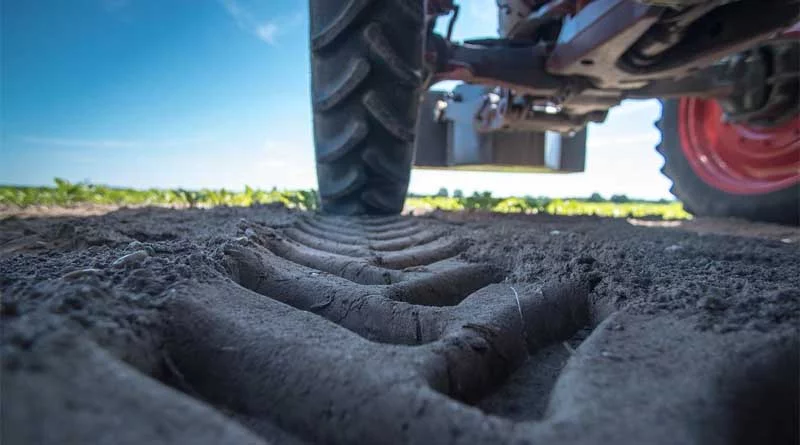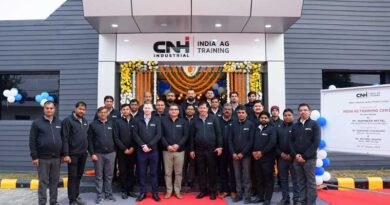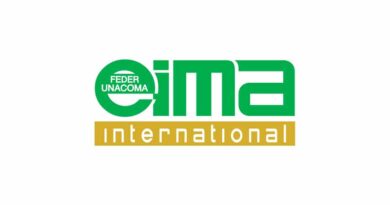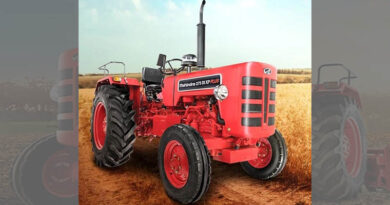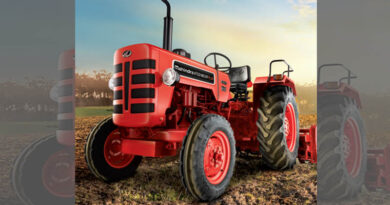Tractor industry in India expected to grow by 3-4% in 2023-24: Narinder Mittal, Managing Director of CNH Industrial India
Exclusive Interview: Mr. Narinder Mittal, Country Manager & Managing Director of CNH Industrial (India) Private Limited with Mr. Nimish Gangrade, Krishak Jagat, India.
23 May 2023, New Delhi: The Indian tractor industry has enjoyed a successful fiscal year 2022–2023. Seven of the 14 major Indian tractor manufacturing brands have experienced double-digit growth in the past year. The sector expanded by 8% in the fiscal year 2022–2023, and if current growth rates hold, it will surpass the 1 million milestone by 2025.

We at Krishak Jagat did an exclusive Interaction with Mr. Narinder Mittal, Country Manager & Managing Director of CNH Industrial (India) Private Limited to understand the tractor market trends, segment shifts, and stubble management technology. CNH Industrial is the parent organization of New Holland Agriculture and Case IH.
Q. How has been the tractor market performance of New Holland tractors for the financial year 2022-23 and what is expected for 2023-24?
NM: The financial year 2022-23 has been good I would say as we did 35,367 tractors with a market share of 3.7% covered evenly across all the HP range. CNH Industrial also launched a compact tractor called the Simba Blue Series. The company has received a good response to the launch and there is an increasing demand for compact tractors in the market.
The expectation is to grow in the current year by focusing on specific markets and segments. The major focus for the financial year will be on the Simba Blue Series. We are waiting for the newly launched models to be qualified under government subsidy schemes so that the farmers can be benefitted. The company intends to do about 40,000 tractors in the financial year 2023-24.
Q. What are the key markets for New Holland tractors in India?
NM: New Holland tractors are quite strong in Madhya Pradesh, Punjab, Maharashtra, and Tamil Nadu where it occupies a good market share and majorly sells high HP range tractors. The company is also focusing on the 50 HP and lower tractor segment in these markets. Karnataka, Uttar Pradesh, Rajasthan, and Gujarat are our emerging markets where the company would focus on promotional strategy, and go-to-market initiatives to gain market share.
Q. What are the key tractor segments CNH Industrial is targeting?
NM: The industry is seeing a shift from 50+ HP tractors to below 50 HP tractors. Tractors in the 45-50 HP segment would see growth in the coming year. New Holland is very strong in the 50+ HP tractor segment. Competing in the below 50 HP tractor segment with the industry will be a challenge for New Holland.
Q. Do you see any challenges in the current year?
NM: There is a forecast of El Nino by Skymet Weather and caution expressed by government bodies for the current agriculture season. If the monsoon is on time and the farmers are able to take 2-3 irrigations along with the support of the Central Government in the form of Minimum Support Price (MSP) for major Kharif crops, the industry would grow by 3-4% in the current financial year over last year.
Even if the rainfall is below normal, I do not see the industry going down significantly because one single season might not be a deterrent for tractor sales.
Q. What are yourstrategies to remain competitive in the Indian market?
NM: We have planned to introduce some new models here in India in the next few years. We are bringing in new technologies from outside and localizing them here in India and giving the benefits of global technology to Indian farmers and customers.
We are focusing on the 39 HP and 42 HP tractor segments in the markets where we have a strong market presence. We are also discussing and understanding the specific requirements of these lower HP segments from its customers to provide the desired product. This is all being done to provide more value to the customer as the customers in lower HP segments are more price sensitive. The company is also working on bringing lower HP narrow tractors which work well in the horticulture crops.
Q. What is your perspective on the Indian tractor market and how do you see it growing in the coming years? When do you think it will reach 1 million tractors by market size?
NM: We expect the Indian tractor market to reach a 1 million market size by 2025. Other than the numbers, it is important to look at the higher HP market segment as it is picking up in India. We have sold a few tractors in 120 HP segments and intend to introduce more products in the 110-120 HP segment. Currently, we are importing higher HP tractors from our manufacturing plants in UK and Europe and selling them here in India. The company plans to localize this manufacturing in India if the market can give us sufficient volumes. We will then be able to provide cost-effective and technologically advanced solutions to Indian farmers. These higher HP tractors will be able to help in stubble management extensively.
Q. What is CNH Industrial doing in the space of new-generation technology? Are there any farming-related tech solutions to keep high engagement with farmers?
NM: We will be ready to offer farmers low-cost telematics by October-November in 2023. This will be an optional offering. In the future, depending upon the response, it can be a mandatory feature added to the tractors. Telematics will be a good solution for the customers to evaluate the performance of the tractor. This will also include a geo-fencing feature. Right now the company has RFID tags in the tractors which are used in fleet management. Our focus is to provide all these features to the Indian customers and at the same time also keep the cost low.
Q. What solution does CNH Industrial offer for straw management in India?
NM: We are a pioneer in this segment right now. We are selling balers in a big way. We did not anticipate the kind of demand that is there in the market. We are air-freighting the components from the US, assembling them here, and selling them in the market right now. Knowing this, we are localizing all those components here in India so that the cost doesn’t go up. We intend to sell about 700-800 balers this year.
Other than this, we are also working on bringing in good solutions from other plants where we manufacture. The company is bringing in Round Balers and plans to sell about 50 of them and about 50 big balers this year.
Our teams from Italy and the US regularly visit India and interact with the farmers and work with them closely. This helps us to understand the market and bring in the right customizations as per the local practices.
Q. How is the market for Sugarcane harvesters in India
NM: We recently rolled out the 1000th Austoft series sugarcane harvesters under the brand Case IH from our plant in Pune. This series is designed for sugarcane plantations with a 1.2 m or above row-to-row spacing, which many Indian sugar mills have adopted to mechanize their cane harvesting in the last 8-10 years. We are also working on technology enablement in sugarcane harvesters and very soon we will introduce low-cost-auto guidance systems in Sugarcane harvesters that can be used by farmers. We will be displaying and demonstrating the harvester to the mills, dealers, and farmers to make them understand the kind of benefits they can have from this precision technology solution.
(For Latest Agriculture News & Updates, follow Krishak Jagat on Google News)

